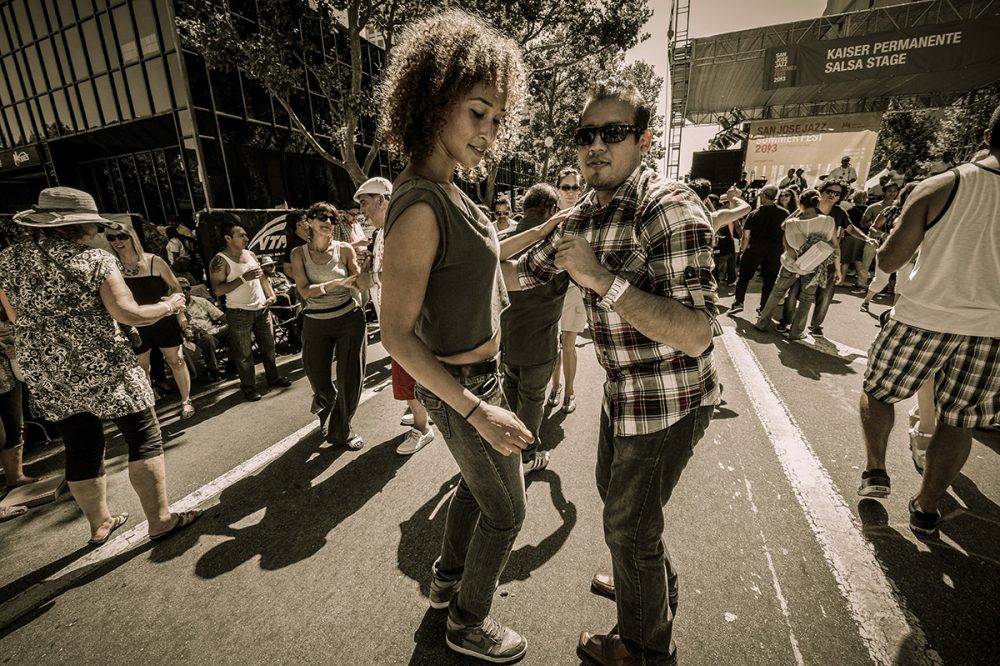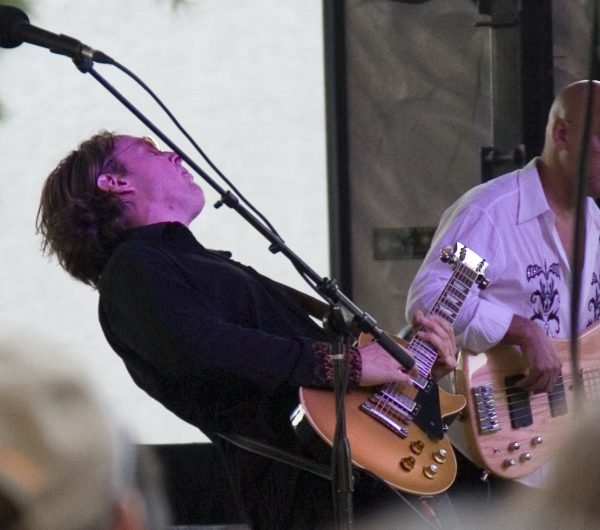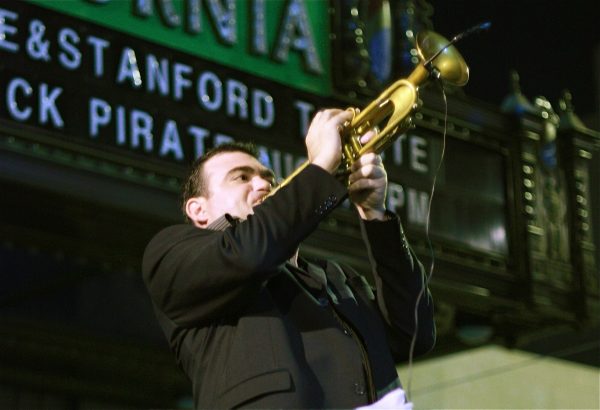
A couple getting their groove on at the San Jose Jazz Festival. Photo courtesy of San Jose Jazz Festival.
San Jose is the tenth largest city by population in the country, but its downtown became sleepy after retail moved to the malls in the 1970s. In 1991, a group of community members decided to help bring some life to the downtown.
We formed a board and thought that we would run a jazz festival. The city encouraged us to use the newly-minted convention center. From this vague wish, a good idea and an even better music festival, now in its 26th year, was born.
Our group was completely grassroots, but we had the enthusiasm necessary to mount a festival. Though we planned the event for mid-August, we were neophytes and did not spend much time organizing. By early June we realized that while the convention center was technically free, every chair and table would cost us money. And potential sources of income—such as sponsorship and beverage income—would not belong to us because the convention center would take those funds.
So we decided to make the bold step of bringing the music outside to a park and offering it for free. At that time, performances in city parks had to be offered for free. We chose Plaza de Cesar Chavez, which was located in the city core and surrounded by hotels. There we would have some beverage income, since the concessions would belong to us. A local beer distributor gave us our initial sponsorship. And then 10,000 people showed up to help us inaugurate the San Jose Jazz Festival.
Since then we have grown to 13 stages; we also use clubs, hotel facilities, and other streets. Last year, 45,000 people showed up. We’ve taken advantage of the good weather and the downtown location to generate a feel that not many festivals have these days. The Plaza de Cesar Chavez is still the focus of activity—and the location of the main stage.

Joe Bonamassa on stage at the San Jose Jazz Festival in 2008. Photo courtesy of Paulo Philippidis/Flickr.
And the festival has expanded in ways we never could imagined, fostering new generations of musicians and audiences, and providing free music not just for our event but also year-round.
The growth is a reflection of the festival’s popularity and of our work building community. Our volunteer base has increased from 30 the first year to over 600 now—with various groups contributing time for everything from beverage sales to hospitality crew. The festival has become intertwined with the local business community. Extending the festival from two days to three helped hotel business during what would otherwise be a very slow week, and all the stages we established in clubs, meeting rooms and restaurants helped businesses with customers and sales. We also created the club crawl: On Friday and Saturday nights we offer free performances at 12 different hotels, restaurants, and clubs.
Musicians, both local and from out of town, have embraced the festival. We typically get eight to 10 requests from overseas acts to play here. To keep the festival fresh and exploratory, we work with a number of unpaid co-curator community members who keep tabs on promising new musicians in blues, jazz, Latin, and salsa.
We’ve also started three programs to develop young musicians and audiences: the High School Allstars, Youth Summer Camp, and Progressions, the last for kids in kindergarten and up. The Allstars, a year-round big band comprised of students who audition, perform twice in different settings. The Youth Summer Camp, which precedes the fest, features a group of students selected from the camp sessions; they play on the main stage Sunday morning.

Blow that horn! San Jose Jazz Festival, 2009. Photo courtesy of Monica P.C./Flickr.
We have found it difficult, with schools out of session, to tie in educational activities around the summer fest. So seven years ago we spun off a winter festival, featuring individually-priced shows at various venues in February. This timing gives us opportunities to organize additional educational activities with local colleges and schools when they are in session.
While San Jose has a sleepy feel, the festival has an urban street vibe that involves a lot of dancing. Closing off city streets allowed us to program the types of music that encouraged dancing, and the asphalt was much better for dancing than the grass in Plaza de Cesar Chavez. The dancing has in turn made the music more diverse. It’s now about 20 percent jazz; the rest is salsa blues, rhythm and blues, big band, youth groups, Latin jazz, funk and soul.
Each year we have added one or two stages, encouraged by the attendance and our desire to expand the types of musical offerings. In 2008, 18 years after we started, we decided that we could not afford to throw this big party without charging money. So we got the rules changed for downtown parks and charged $5. The price has increased to $25 this year—still modest compared to similar events. Each time we raised our prices, we lost about 10 percent of our audience. But the income grew, so we could increase artist fees, and the sophistication of the audience grew with the diversity of the music and the increases in the stature of the artists that we were able to program.
The San Jose Jazz Summer Fest, as it is now called, draws fans and musicians from around the world. It is almost an unstoppable mix of good times and opportunities to find new, younger (or older) but not established artists. The few headliners draw crowds of course, but the mix encourages exploration of geography and talent.
As the organization has grown, so has our desire to program free music in the community throughout the year. We now routinely work with clubs and restaurants to help them find talent, consult with others free of charge, and program a few shows when we can. Over the course of the year this amounts to over 100 mostly free performances. Our staff is very small, with just two full-time people, and three other year-round staff members, so our ability to build more connections is limited by the number of staff members we have.
On the other hand, if we had more money, we might not have been able to maintain our community feel for a quarter century.




Send A Letter To the Editors